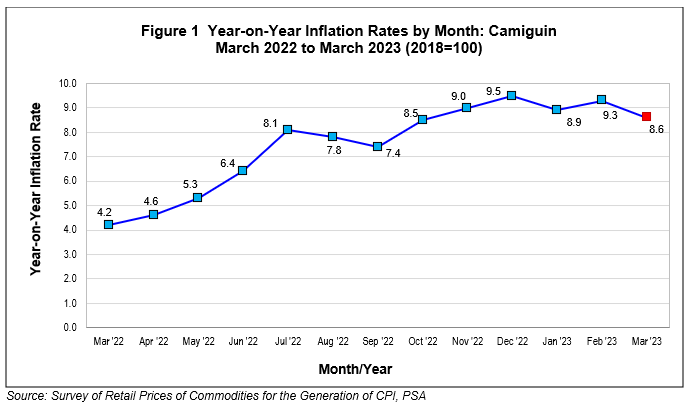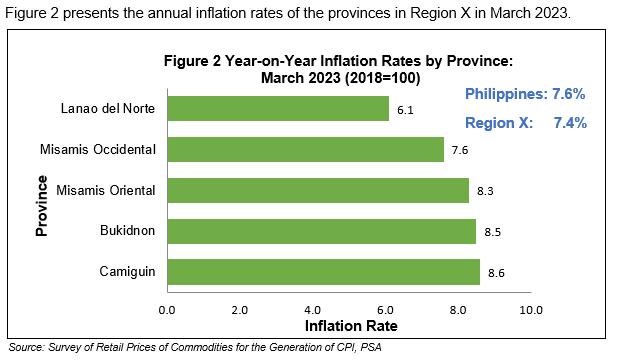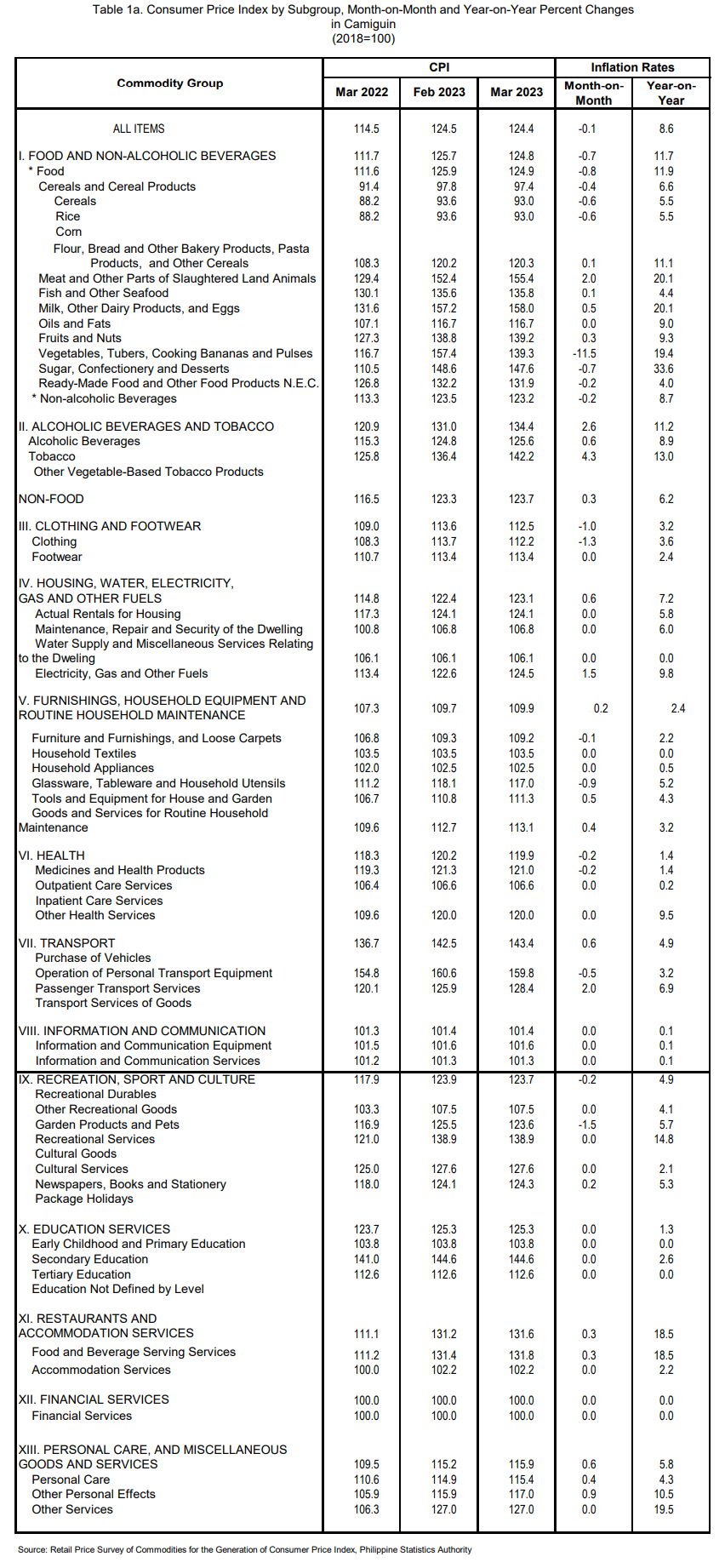Inflation Rate in Camiguin Slowed Down to 8.6%
The inflation rate in the province of Camiguin slowed down to 8.6 percent in March 2023, from 9.3 percent in February 2023. Inflation during the first three months of the year averaged 9.0 percent. (See Table 1a and Figure 1)



The observed slower annual growth rate of the food index in March 2023 was primarily caused by the lower annual increments in the following food commodity groups: cereals at 5.5 percent, rice at 5.5 percent, and flour, bread and other bakery products, pasta products, and other cereals at 11.1 percent, from 6.5 percent, 6.5 percent, and 11.6 percent respectively in February 2023. Also, the following food and non-alcoholic beverages indices registered slower annual increases during the month of March 2023: fish and other seafood (4.4%), oils and fats (9.0%), vegetables, tubers, cooking bananas and pulses (19.4%), sugar, confectionery and desserts (33.6%), and ready-made food and other food products not elsewhere classified (4.0%).
The following food group indices, on the other hand, recorded an increase in March 2023:
- Meat and other parts of slaughtered land animals, 20.1 percent;
- Milk, other daily products and eggs, 20.1 percent; and
- Fruits and nuts, 9.3 percent.
(See Table 1a, p. A-1)

Technical Notes
This Special Release presents the results of the Survey of Retail Prices of Commodities and Services for the Generation of Consumer Price Index (CPI) conducted in March 2023.
CPI
The CPI is an indicator of the change in the average retail prices of a fixed basket of goods and services commonly purchased by households for their day-to-day consumption relative to a base year.
Uses of the CPI
As an indicator, the CPI is most widely used in the calculation of the inflation rate and purchasing power of the peso. It is a major statistical series used for economic analysis and as monitoring indicator of government economic policy.
The CPI is also used as a deflator to express value series in real terms, which is, measuring the change in actual volume of transactions by removing the effects of price changes. Another major importance of the CPI is its use as basis to adjust wages in labor management contracts as well as pensions and retirement benefits. The CPI also serves as inputs in wage adjustments through the collective bargaining agreements.
Components of the CPI
- Base Period
This is a reference date or simply a convenient benchmark to which a continuous series of index numbers can be related. Since the CPI measures the average changes in the retail prices of a fixed basket of goods, it is necessary to compare the movement in previous years back to a reference date at which the index is taken as equal to 100.
The present series uses the 2018 as the base year. The year 2018 was chosen as the base year because it is the year when the Family Income and Expenditure Survey (FIES) was conducted. The FIES is the basis of the CPI weights.
- Market Basket
Market basket refers to a sample of thousands of varieties of goods purchased for consumption and services availed by the households in the country. It was selected to represent the composite price behavior of all goods and services purchased by the consumers.
- Weighting System
The weighting system is a desirable system that considers the relevance of the components of the index. For the CPI, the weighting pattern uses the expenditures on various consumer items purchased by households as a proportion to total expenditures.
- Geographic Coverage
CPI values are computed at the national, regional, and provincial levels, and for selected cities. A separate CPI for NCR is also computed.
- Classification Standards
The 2012-based CPI series is the first in the series that used the 1999 United Nations Classification of the Individual Consumption According to Purpose (COICOP) in determining the commodity groupings of the items and services included in the market basket. The 2018-based CPI also follows the 2015 Philippine Standard Geographic Classification codes.
Inflation Rate
The inflation rate (IR) is the annual or monthly rate of change of the CPI in percent. It is interpreted in terms of declining purchasing power of money.

